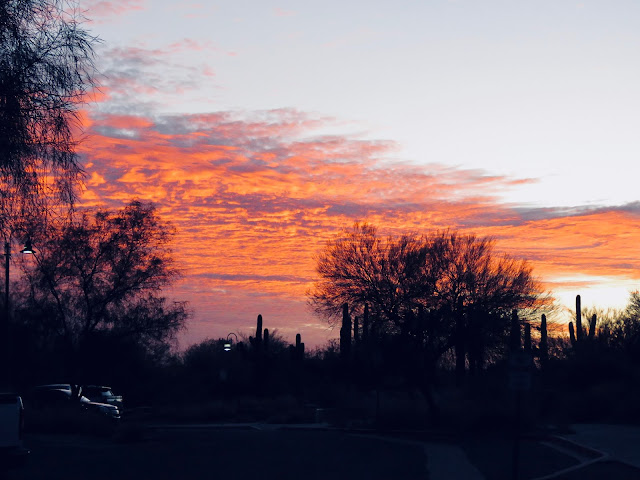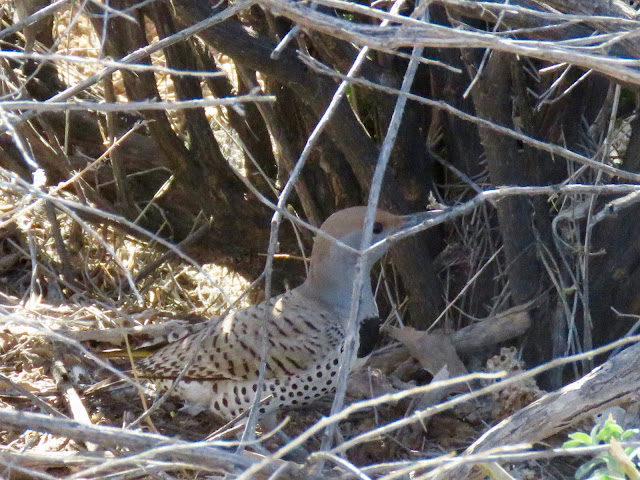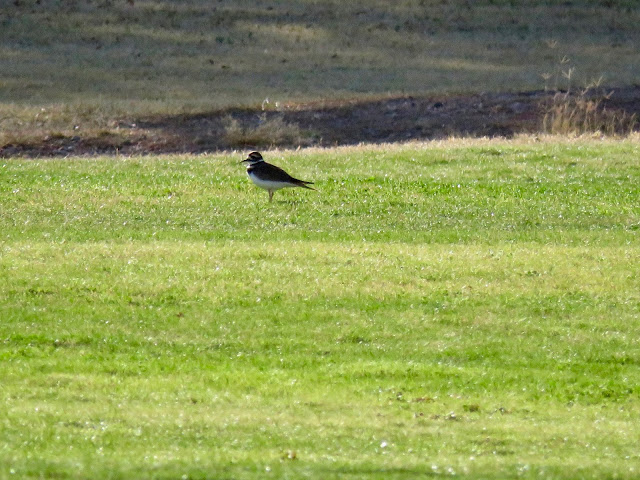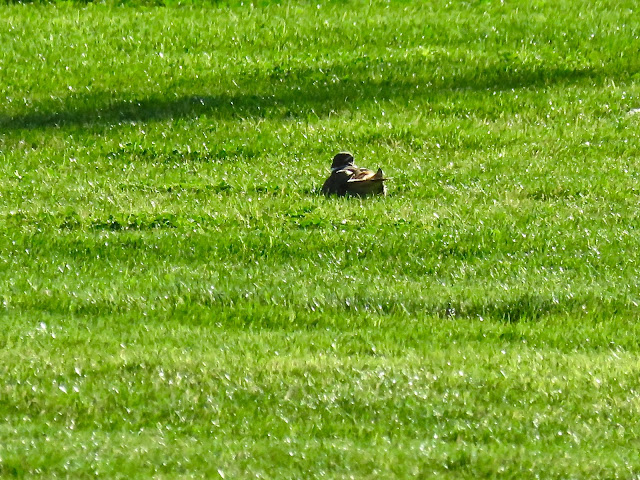Unexpectedly, I awoke early to the sound of two GREAT HORNED OWLS calling to one another. The male, with deep hoots, was probably on my street light standard as it often perches there. This time, however, its hoots were being answered with a higher pitched hooting from a female. Back and forth it went. I chose not to go back to sleep at 3:30 a.m. but stayed in bed just to listen to them for the next half hour. A very HAPPY NEW YEAR's DAY for me!
GREAT HORNED owls start nesting in January so breeding season was getting underway. Although these birds raise their young in the dead of winter, in Phoenix their nests are often found in the open areas of Lowe's and Home Depot, high up on stacked material in the gardening areas. Once breeding occurs, the female will incubate up to five eggs while the male brings her food. Within a month, the owlets will be visible - whether in a saguaro nest, tree, or in your back yard. Both parents guard the young and teach them how to hunt.
Photos below taken in a Mesa Home Depot a few years ago show how adaptive the owls are:
 |
| Male GREAT HORNED OWL |
My all-time favorite photo of a young GREAT HORNED OWL is the one below that surprised me by cooling its feet during the hot summer in the swimming pool where I live.
With Lois Lorenz joining me again for another New Year's Day exploration of two Salt River Recreation areas, (Granite Reef & Coon Bluff) we found lots of good birds, including three (3) BALD EAGLEs; two (2) HARRIS'S HAWKs; an ASH-THROATED FLYCATCHER; and in the river: COMMON GOLDENEYE, BUFFLEHEAD, NORTHERN PINTAIL, RUDDY DUCKs, GADWALL, CANVASBACK and PIED-BILLED GREBEs.
 |
| COMMON GOLDENEYE |
 |
| BUFFLEHEAD |
 |
| RUDDY DUCK |
Each year is a new year of birding. At one minute past midnight on New Year's Eve, the clock starts ticking on the number of birds a person enters into eBird or any other database. I managed to see a total of 456 species of birds in 2017, with 341 of them in Arizona, ranking me among other e-bird users in Arizona at #11 for the year.
So, again, we set out now in 2018 in our own defined manner to catch up with rare birds or just go out and enjoy various places around our very birdy state. eBird works the statistics; we know at the end of the year just about anything we want to know about our birding numbers during the past year: what counties we birded in any state in the USA and around the World.
All the birds being posted here are as of January 1st, so beginning with the GREAT HORNED OWL as my first bird of 2018, all the birds you see here are also new to this year's list.
 |
| GREATER YELLOWLEGS |
We didn't cover a great deal of territory at Granite Reef and Coon Bluff Recreation Areas but enjoyed our first-day-of-the-year birding together.
View this checklist online at http://ebird.org/ebird/view/checklist/S41518709
View this checklist online at http://ebird.org/ebird/view/checklist/S41519822
January 3, 2018
When I arrived at Gilbert Water Ranch this morning, the sun was just rising.
Later, it changed:
Also took note of the setting Wolf Super Moon:
Today, I reversed my usual trek, beginning at Pond 6 so that by the time I reached the 1/7 trail, the sun might have warmed suffciently to have insects available on the leaves of the Tree of Awesomeness. Several rarities continue in a large spreading cottonwood there and it would be nice to include them on my 2018 Arizona Bird List.
Beginning with 95 CANADA GOOSE, the ponds with water held a great variety of wintering waterfowl including large numbers of NORTHERN SHOVELER.
In addition to being eye-catching and colorful, the long-legged shorebirds including numerous SNOWY EGRET, a few GREAT EGRET, flocks of BLACK-NECKED STILT and AMERICAN AVOCET were spread around on several of the ponds.
BLACK-CROWNED NIGHT HERONS, a couple GREAT BLUE HERON and my spark bird, GREEN HERON were also present in various ponds or perches.
 |
| GREEN HERON |
 |
| LESSER SCAUP |
 |
| RING-NECKED DUCKs |
 |
| NORTHERN PINTAIL |
 |
| NORTHERN CARDINAL in a mesquite tree along one of the trails |
A bird that often eludes me showed itself in Honeybee Cove (camping area): a shy SPOTTED TOWHEE that, upon seeing me, decided it didn't want to come out from under the shrubs after all.
When I reached the large cottonwood on the 1/7 trail by the Mason Bly bench, several birders from Tucson were present and could not believe the number of warblers foraging on insects on the big leaves. Although I wanted to start the New Year with photos of the continuing rarities, the BLACK & WHITE WARBLER was quick when it flew in and worked a limb like a nuthatch. No sooner did I call it than it flew off completely and was replaced by yet another YELLOW-RUMPED WARBLER. One of the Tucson birders spotted the Black and White with me.
The warblers flit around so quickly, I ended up holding my camera at the action spots with the hope of capturing their likeness sufficiently to ID what my binoculars were telling me. The only photo that came close was the one of the continuing NORTHERN PARULA, with a beautiful blue-gray back and head, two white wing bars, yellow throat, reddish and black bands across the chest of this adult male. My photo shows a blob at that spot.
 |
| NORTHERN PARULA |
 |
| Same bird as above from internet |
Although I thought I had one of the other rarities, it did not give me sufficiently good enough looks to correctly identify it, so I passed. (Chestnut-sided Warbler that the others had already seen).
View this checklist online at http://ebird.org/ebird/view/checklist/S41588887
January 4, 2018
In late morning, I stopped by Red Mountain Park where I walked around the lake and then out into the desert. There were many expected birds and I didn't take very many photos, but I've posted a few below. This first one, a MUSCOVY DUCK is a domestic duck and does not count on our list but I find it fascinating to gaze upon. Only in the wild is it countable.
In addition to many AMERICAN COOT, these AMERICAN WIGEON seemed to like the pond.
 |
| CANADA GOOSE need no introduction |
























No comments:
Post a Comment